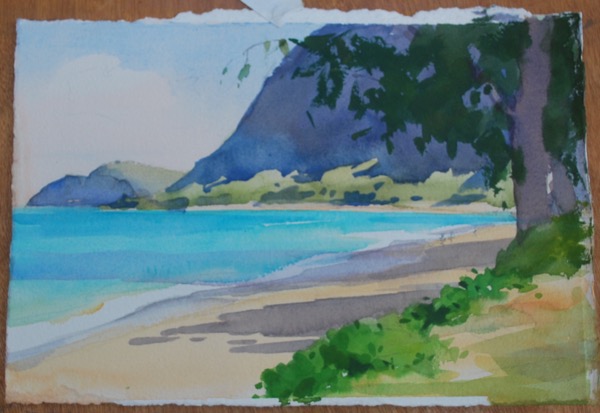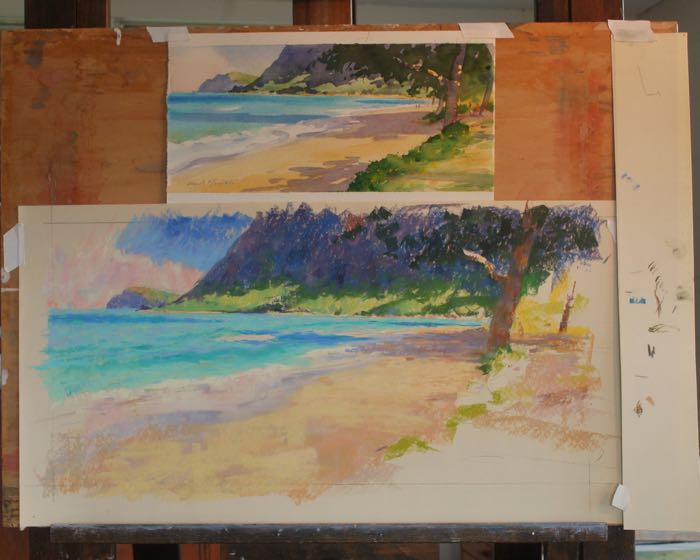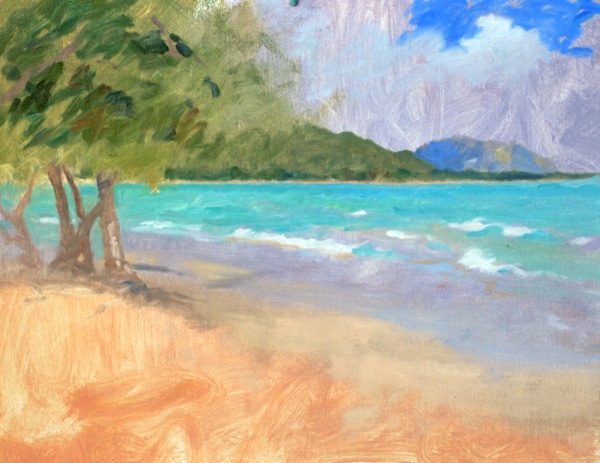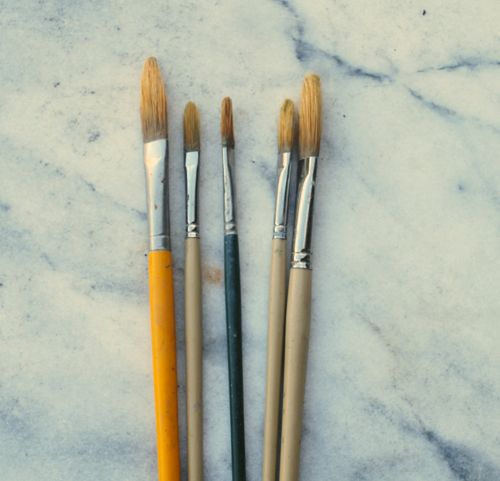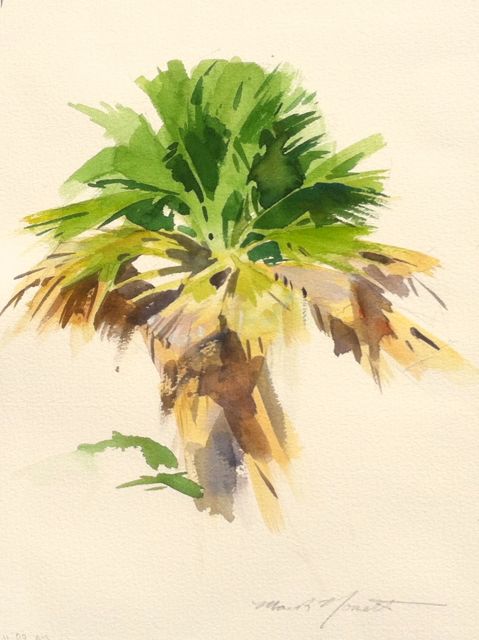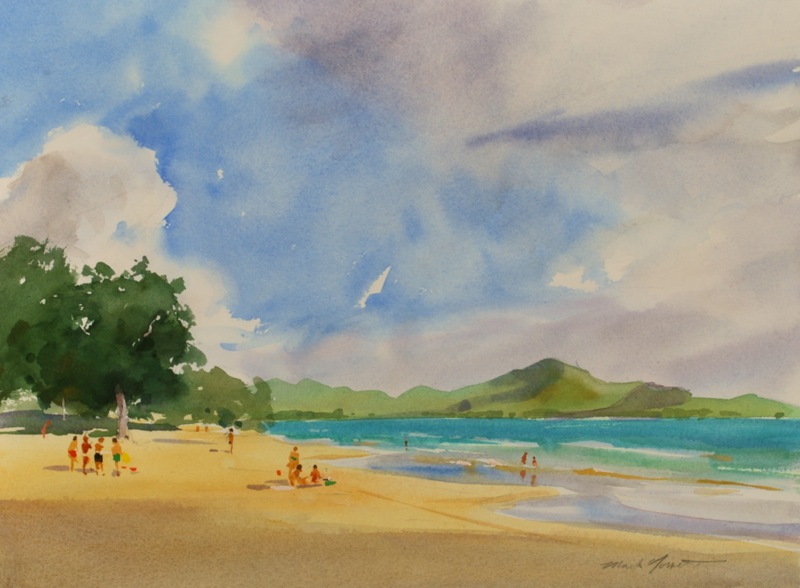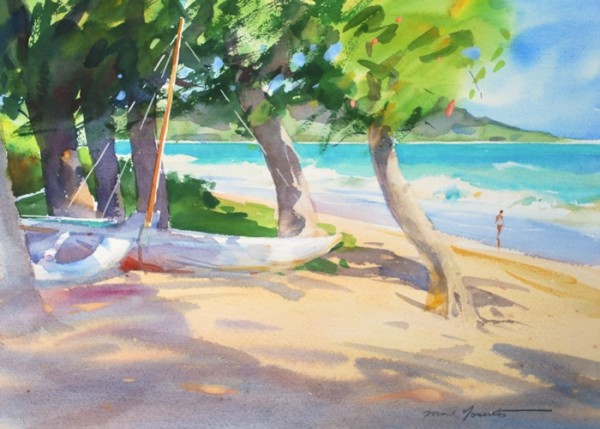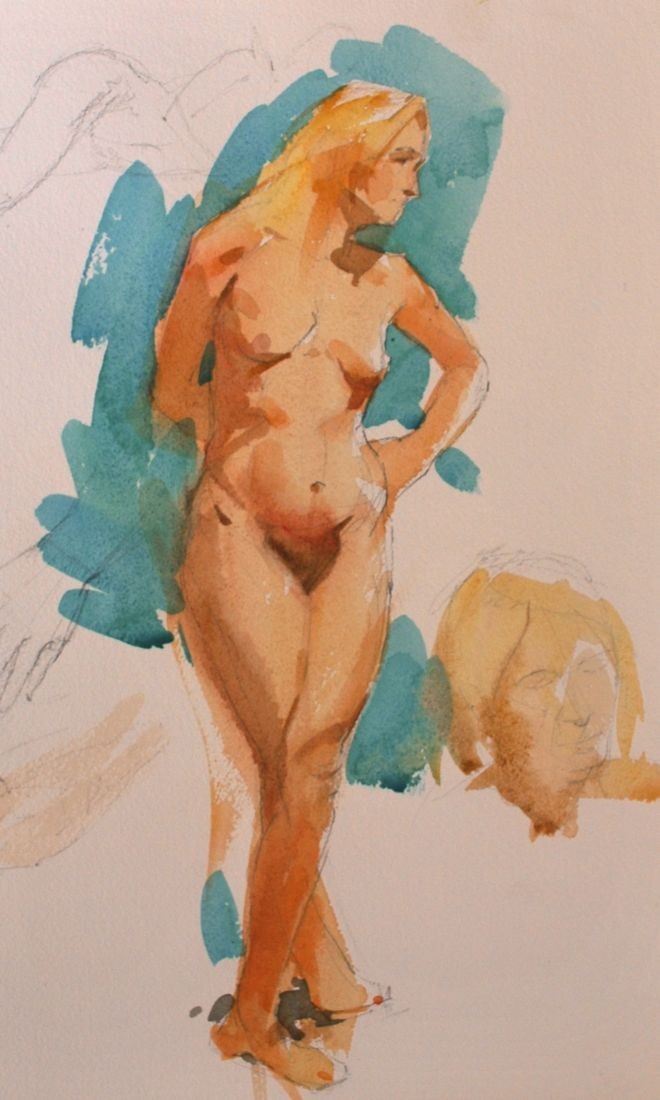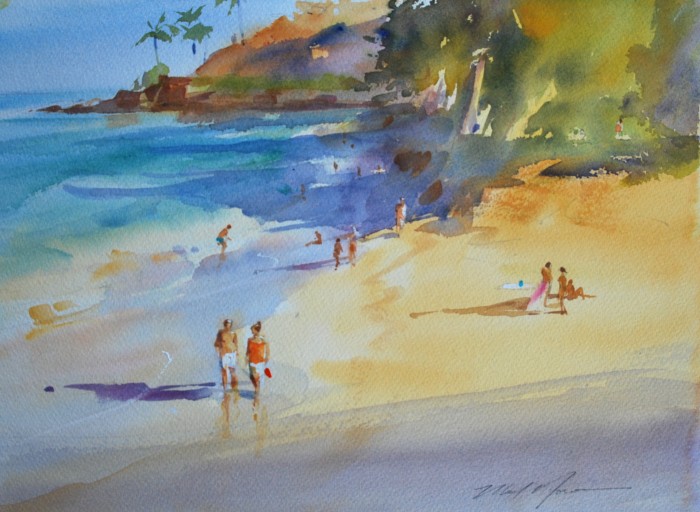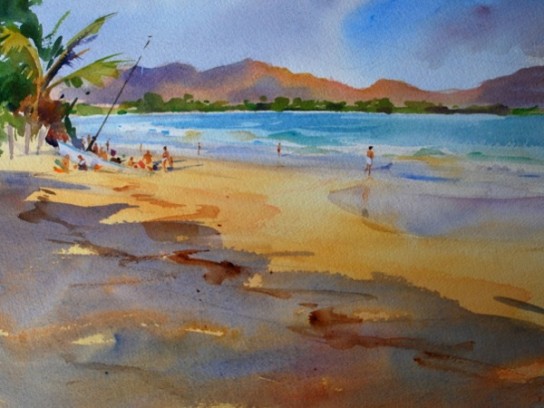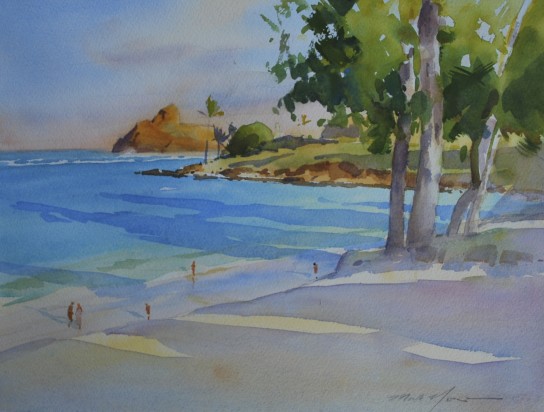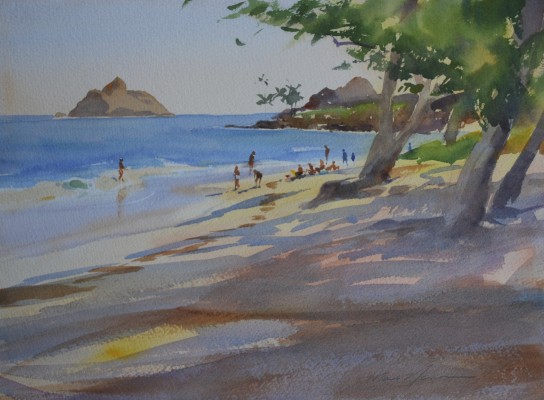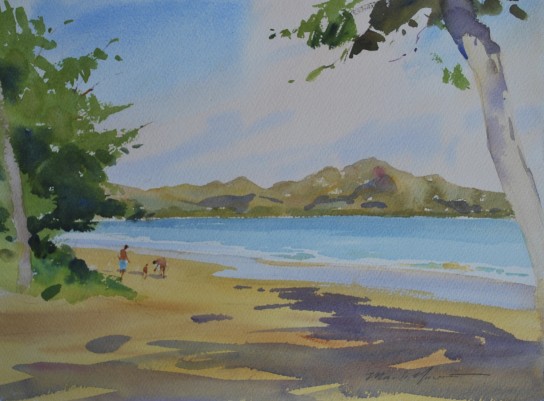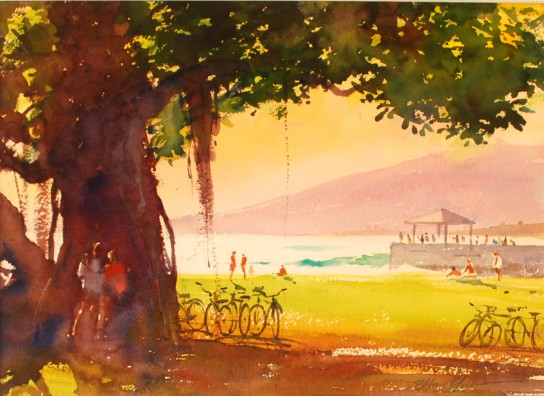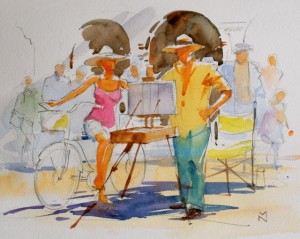On many occasions, I’ll find a subject that requires an immediate response, so I take the plunge. But either weather, the poor quality of the light, or other circumstances make an in-depth plein air study hard to manage.
So, oftentimes I’m disappointed. The results of these plein air sketches are not as effective as they would be if they were more fully developed. And almost always the main weakness is in the composition. Either nature didn’t provide (or I didn’t recognize) a suitable arrangement of elements to make viewing the painting a fully satisfying experience.
This sketch (above) is a 7 x 11″ watercolor that is our case-in-point. It was sufficient in a no-frills way to capture the general effects. But the sunlight was on again/off again, I had interruptions from rain, and the composition now seems crowded into the rectangular format.
A Reminder and a Reference
The sketch’s real value to me is only this: when reviewed later, after I’ve moved on to other work, I’m reminded of visual/sensual experiences ( I mean sounds, smells, circumstances) that are now part of my memory. It conjures recollections much more like a movie than a snapshot. The sketch has become a reminder and a reference.
What artists know is that sketching something plants the entire experience of being somewhere much more firmly in the mind than passive observation or photography. The information from sketching is sifted. More personal as well as visual, gathered through the lens of our own personal temperament. And this added dimension ultimately enriches the final painting.
From this stage, I’m then able to deal with the composition.
As mentioned, the first sketch doesn’t suggest the grandness of the place. It’s hemmed in by the rectangle and lacks clear areas of interest. So I put together this second study (below) in my studio, making better use of the elements that nature provided as well as altering the composition to suit my desire for a better eyepatch and more interest.
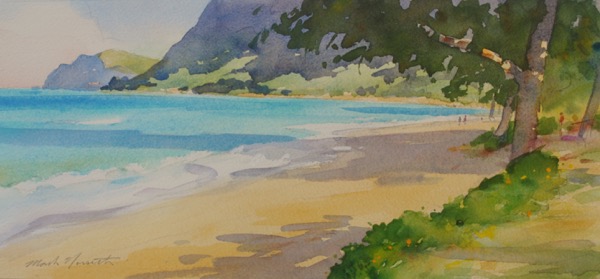
This small study is still “the place”, but is now better organized to lead the eye in an interesting way. The addition of figures and refining and simplifying the shapes now give me something with more pictorial interest.
A Point of Departure
From here the watercolor can serve as a basis for many possibilities… an oil painting, a larger watercolor, or a pastel. In this instance I thought a larger painting in pastel would be a good response, to be worked up in my studio. So I used both the first sketch and study to refer to as I worked. I think I developed a better painting than I might have had otherwise…while making it much more “my own” in the process.
Here’s the easel setup with the watercolor study positioned so I can see it directly with the pastel painting. After several sessions I was able to complete the pastel.
And below is the final painting, now framed and in a private collection.
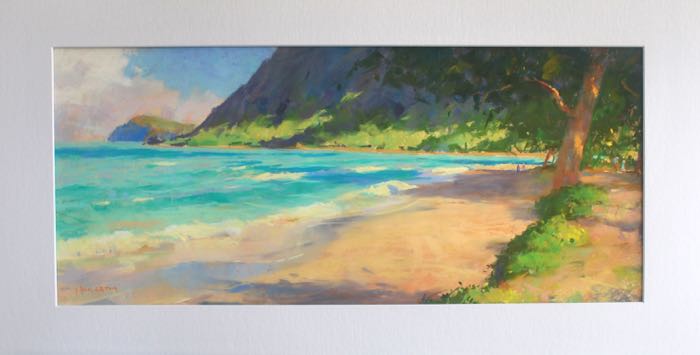
One Final Thought
We obviously live in a time of technology, and the option of photography as a useful reference tool has been available and used by many painters for a long time. And undeniably, many beautiful works have resulted from this.
For my own efforts I have decided to invest in drawing and painting without the advantages/disadvantages of photography as much as possible. And I recommend that my students, while they are my students, try and do the same.
Art-making and life-living in our modern world have increasingly become solely results oriented. Labor saving devices are a wonderful blessing for the many people occupied in endlessly routine and stifling or tedious work. We’re thankful for labor saving devices whenever the labor is unpleasant, dangerous, or unprofitable.
But artworks are different. We are richer for the experience of interfacing with our subject over time, watching the many variations and possibilities, getting to know the subject in many moods.
On that subject, we’re well served by painter Joseph Paquet’s recently published forward to the Plein Air Painters’ of America exhibition catalog. He eloquently states the whole idea better than I’m able to.
It’s well worth the click!



